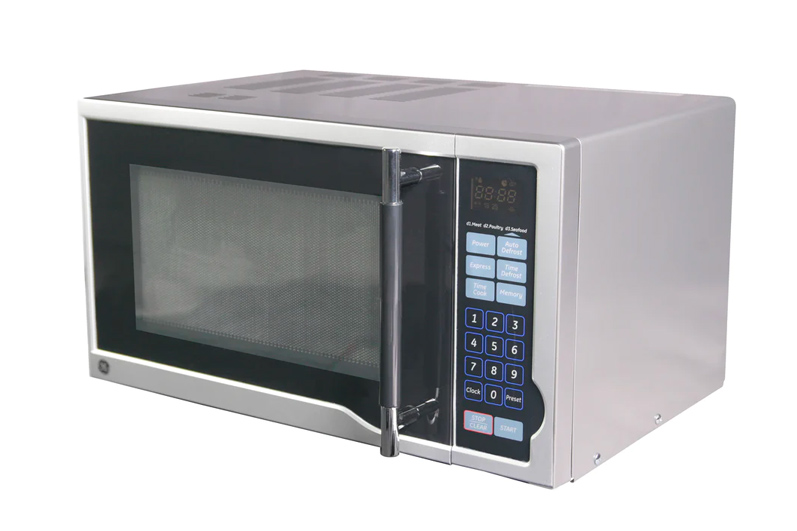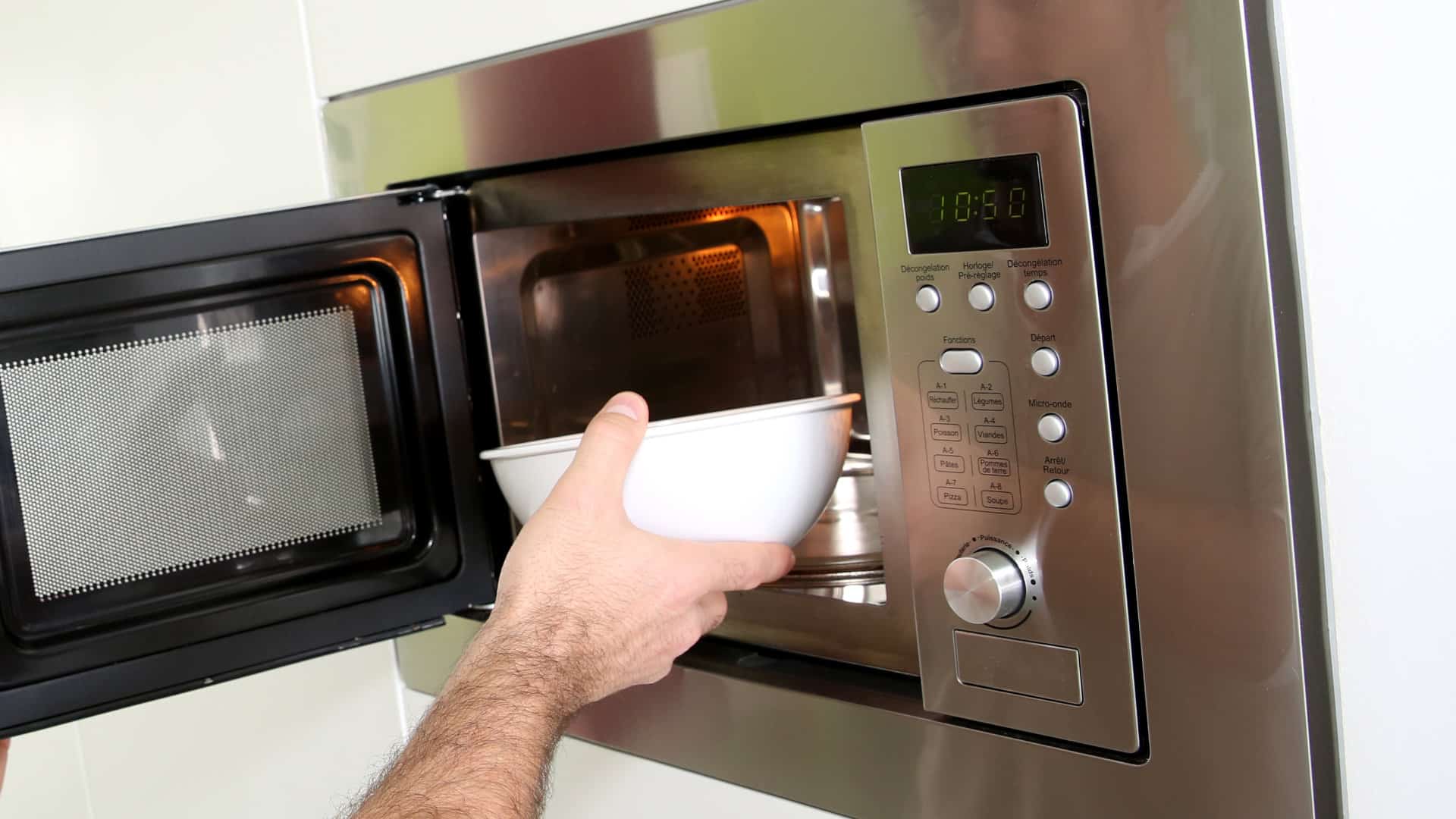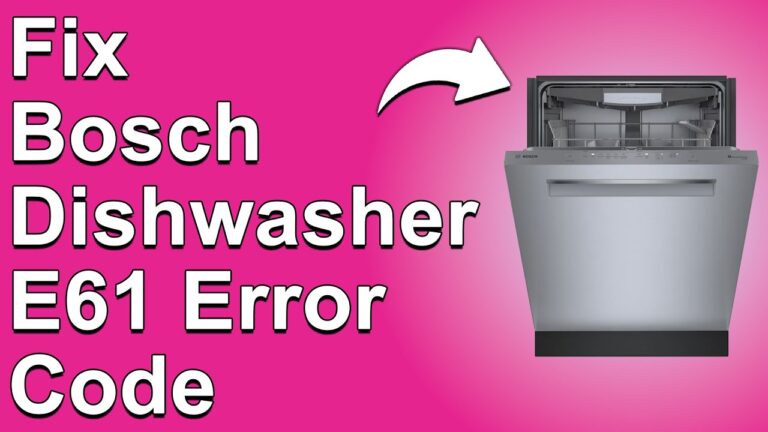General Electric Microwave Troubleshooting: Quick Fix Guide
Is your General Electric microwave acting up and leaving you frustrated? You’re not alone.
Whether it’s not heating properly, making strange noises, or refusing to start, a malfunctioning microwave can quickly disrupt your daily routine. But don’t worry—many common issues can be fixed without calling for professional help. In this guide, you’ll learn simple troubleshooting steps to get your GE microwave back to working order.
No technical jargon, no complicated instructions—just clear, practical solutions you can try right now. Stick with us, and you could save time, money, and the headache of unnecessary repairs. Ready to take control of your microwave problems? Let’s dive in!
Common Issues With Ge Microwaves
General Electric (GE) microwaves are known for their reliability and performance. Still, like any appliance, they can encounter issues. Identifying common problems helps you resolve them faster. Below, we address some frequent issues GE microwave owners experience.
Microwave Not Heating
A GE microwave that doesn’t heat can be frustrating. This issue often points to a faulty magnetron. The magnetron generates the heat for cooking. If it fails, the microwave won’t warm food. Another cause may be a defective high-voltage diode. This part works alongside the magnetron to produce heat. Check the power settings as well. Incorrect power levels can impact heating.
Unresponsive Control Panel
An unresponsive control panel can stop the microwave from functioning. Dirt, grease, or moisture buildup may affect button sensitivity. Worn-out buttons or a faulty membrane switch can also cause this. Inspect the control panel for visible damage. Resetting the microwave could resolve temporary glitches.
Strange Noises During Operation
Unusual noises can indicate mechanical or internal issues. A damaged turntable motor might cause grinding sounds. Buzzing or humming could point to a failing magnetron. Loose parts inside the microwave may also create noises. Regular cleaning can prevent debris from causing these sounds.
Door Not Closing Properly
A microwave door that doesn’t close properly is a safety concern. This problem may result from misaligned door latches or hinges. Inspect the door for visible obstructions like food debris. A damaged door seal can also prevent proper closure. Ensure the microwave is placed on a level surface.

Credit: www.sickappliances.com
Diagnosing Power Problems
Is your General Electric microwave suddenly refusing to turn on? Power issues can be frustrating, but they are often straightforward to address. By systematically checking a few key areas, you can pinpoint the problem and possibly save yourself the cost of professional repair.
Checking The Power Source
The first step is to ensure your microwave is properly plugged in. It might sound obvious, but sometimes the plug can be loose or disconnected accidentally.
Inspect the outlet your microwave is connected to. Test it with another appliance, like a toaster or phone charger, to confirm it’s working. If your outlet isn’t providing power, you may need an electrician.
Also, look for visible damage to the power cord. A frayed or broken cord can interrupt the connection and should be replaced immediately. Have you noticed sparks or burning smells near the outlet? That’s a sign to stop using it and seek expert help.
Inspecting The Circuit Breaker
Microwaves use a lot of energy, and this can sometimes trip the circuit breaker in your home. Head to your electrical panel and check if the breaker for your kitchen has switched off.
If it’s flipped to the “off” position, reset it by turning it back to “on.” Be sure to check if the microwave powers up afterward. If the breaker trips again, your microwave might be drawing too much power, or there could be an issue with your wiring.
Have you noticed the breaker tripping often? This could mean your microwave is faulty or your circuit is overloaded. Consider redistributing heavy appliances to different outlets.
Testing The Microwave’s Fuse
If your microwave still doesn’t work, it could be a blown fuse inside the appliance. Microwaves often have internal fuses that protect them from power surges or overheating.
Unplug the microwave and remove the outer casing carefully. Look for the fuse—typically a small glass or ceramic cylinder. If the fuse looks burned or broken, it needs replacing.
Replacement fuses are usually inexpensive and available at hardware stores. Make sure you purchase the correct type for your microwave model. After replacing the fuse, reconnect the casing and test the microwave again.
Power problems don’t have to leave you scratching your head. Have you ever fixed a microwave issue on your own? It’s surprisingly empowering and worth a try. If none of these steps resolve the issue, it’s time to consult a professional technician or consider replacing the microwave altogether.
Fixing Heating Problems
Is your General Electric microwave refusing to heat up your leftovers? This can be frustrating, especially when you’re in a hurry. The good news is, most heating problems are fixable with the right troubleshooting steps. Let’s dive into how you can tackle this issue by focusing on three common culprits: the magnetron, high voltage diode, and capacitor.
Inspecting The Magnetron
The magnetron is the heart of your microwave’s heating system. If it’s faulty, your microwave won’t heat food, no matter how long you wait. To inspect it, you’ll need to unplug the microwave and remove the outer casing.
Once you’ve accessed the magnetron, look for visible signs of damage, like burn marks or cracks. If you have a multimeter, test it for continuity; no reading means it’s defective. Magnetrons can be replaced, but they aren’t cheap, so weigh the cost of repair versus replacement of the entire unit.
Checking The High Voltage Diode
The high voltage diode is what converts AC power into the DC power needed for the magnetron. A broken diode can lead to a no-heating issue. To check it, discharge the capacitor first to avoid any risk of electric shock.
Next, use a multimeter to test the diode. If the multimeter shows no reading in either direction, it’s time to replace it. Diodes are relatively inexpensive and easy to find online or at local appliance stores.
Replacing The Capacitor
The capacitor works alongside the diode to power the magnetron. If it’s faulty, your microwave won’t heat, and you might even hear a loud buzzing sound. Capacitors can store dangerous amounts of electricity even after unplugging the microwave, so be extra cautious.
After discharging the capacitor safely, check it using a multimeter set to capacitance mode. A bad reading or no reading at all confirms it’s defective. Replacing the capacitor usually requires some basic tools and a little patience, but it’s a manageable task for most DIY enthusiasts.
Troubleshooting a microwave might feel intimidating, but breaking it down step-by-step makes it easier. Have you checked these components before? If not, now’s the perfect time to give it a shot. You might just save yourself the cost of a new microwave!

Credit: www.youtube.com
Resolving Control Panel Issues
If your General Electric microwave’s control panel stops working, it can be frustrating, especially when you’re in the middle of meal prep. Control panel issues are one of the most common complaints among microwave users. But before you think about buying a new one, let’s go step by step to troubleshoot the problem and see if you can fix it yourself.
Resetting The Microwave
The first thing you should try is a simple reset. Sometimes, the control panel may freeze due to a power glitch or software issue. Unplug your microwave from the power outlet and leave it unplugged for at least 60 seconds.
After a minute, plug it back in and check if the control panel responds. This quick reset often resolves minor glitches. If it doesn’t work, don’t worry—there are other steps to try.
Inspecting For Loose Connections
Loose or disconnected wires can cause the control panel to malfunction. Start by unplugging the microwave for safety. Then, remove the microwave’s outer casing using a screwdriver to access the internal wiring.
Look for any loose or disconnected wires around the control panel area. If you find one, gently reconnect it and ensure it’s secure. Be cautious when handling electrical components, and if you’re unsure, consult a professional.
Replacing The Control Board
If resetting and checking connections don’t fix the issue, the control board might be faulty. The control board is like the brain of your microwave—it manages all the functions, including the buttons and display.
To replace it, you’ll need a compatible part specific to your GE microwave model. Remove the old control board by unscrewing it and disconnecting the wires. Install the new one by reversing these steps and securely reconnecting the wires.
Always test the microwave after replacing the control board to ensure it works properly. If replacing the control board feels overwhelming, hiring a technician can save you time and effort.
Does tackling these issues feel manageable, or does it seem better to call for professional help? Assess your comfort level with DIY repairs and pick the best option for you. Troubleshooting doesn’t have to be complicated if you approach it step by step.
Handling Door And Latch Problems
Microwave door and latch problems can be frustrating, especially when you’re hungry and trying to heat up your favorite meal. If the door isn’t closing properly or the latch doesn’t seem to engage, your microwave might not start. Let’s dive into practical ways to troubleshoot these issues so you can get your appliance back on track.
Cleaning The Door Latch Mechanism
Over time, food particles, grease, or dust can build up around the door latch mechanism. This debris can cause the latch to stick or not function as intended. To fix this, grab a damp cloth and some mild detergent.
Carefully wipe the latch and surrounding areas. Make sure you clean into any small crevices where gunk might be hiding. After cleaning, test the latch by opening and closing the door. Does it feel smoother?
If you’ve ever had sticky microwave doors after a messy cooking session, you know how cleaning can make a big difference. Take a moment to check your microwave after each use to prevent buildup.
Checking For Misalignment
If the door doesn’t seem to close evenly, there might be a misalignment issue. Misalignment can happen if the microwave door was slammed shut or handled roughly. It’s an easy fix.
Carefully inspect the edges of the door and the latch area. Look for any signs of uneven gaps or parts that don’t line up properly. Gently push the door into place or adjust it to see if it aligns correctly.
Think about this: would you trust a crooked door to keep heat inside your microwave? A well-aligned door isn’t just about functionality—it’s also about safety.
Replacing Damaged Door Components
Sometimes, cleaning or adjusting won’t solve the problem. If the latch or door components are cracked, broken, or worn out, replacement might be your best option. Don’t ignore visible damage—it could lead to bigger issues.
Check your microwave’s user manual for part numbers or replacement instructions. You can order parts online or visit an appliance store near you. Make sure you use parts designed for your specific General Electric microwave model.
If you’re hesitant to replace parts on your own, ask yourself: is it better to struggle with a faulty door or spend a few minutes fixing it? Repairs can be simple, even if you’re not a tech expert.
Door and latch problems don’t have to be a headache. With these tips, you’re equipped to troubleshoot and solve the issue effectively. What’s stopping you from getting your microwave back to perfect working condition?
Eliminating Unusual Noises
If your General Electric microwave is making unusual noises, it’s more than just an annoyance. Those strange sounds could indicate underlying issues that may worsen over time. Let’s break down how you can identify and fix the source of the problem so your microwave operates smoothly again.
Inspecting The Turntable Motor
The turntable motor is one of the most common culprits behind unusual microwave noises. If your microwave’s turntable jerks or makes grinding sounds, the motor could be struggling. Remove the turntable plate, clean the area, and test the motor by spinning the coupling manually to check for resistance or odd vibrations.
Still hearing noises? Try running the microwave without the turntable. This can help confirm whether the motor itself needs replacing. Replacement motors are affordable and can be swapped out with a few tools and some patience.
Checking The Fan Blades
Microwave fans ensure proper ventilation, but debris or misaligned blades can create loud noises. Unplug your microwave and locate the fan housing, usually found at the back or near the top. Inspect the blades for dirt, grease, or damage.
If the blades are dirty, clean them gently with a damp cloth. Damaged blades, however, will need to be replaced. A quick online search using your microwave model number can help you find compatible parts.
Tightening Loose Components
Loose screws or components inside your microwave can rattle during operation. Grab a screwdriver and carefully check the screws securing the control panel, door, and internal parts like the magnetron or fan housing. Tighten any that feel loose, but don’t overtighten, as this could strip the threads.
If you hear vibrations coming from the microwave’s exterior, check if the unit is level on your countertop. A simple fix like adjusting the microwave’s feet can silence that pesky noise. You’d be surprised how many rattles come down to uneven placement.
Have you tackled any of these fixes before? If so, which worked for you? Share your experiences in the comments—your tip might just save someone else from a noisy microwave!
Maintenance Tips For Ge Microwaves
Proper maintenance keeps your GE microwave running efficiently and prolongs its lifespan. Simple care steps prevent common issues and save repair costs. Regular attention ensures your appliance remains safe and reliable.
Regular Cleaning Practices
Clean the interior of your microwave weekly. Use a damp cloth or sponge with mild detergent to wipe away food spills. Avoid using abrasive cleaners or scrubbing pads as they may damage surfaces. For stubborn stains, heat a bowl of water and vinegar inside the microwave. The steam loosens grime, making it easier to clean.
Don’t forget the microwave door. Grease and dust often collect around the edges. Use a soft cloth to wipe the frame, seal, and hinges. Keeping the door clean ensures it closes properly, preventing heat leaks.
Avoiding Overloading The Microwave
Place food and containers with care. Overloading can block heat circulation and strain internal components. Always follow the recommended weight limits in the user manual. Avoid using oversized dishes that touch the walls or door.
Use microwave-safe containers to prevent sparks or damage. Metal or foil can cause arcing, leading to potential safety hazards. Spread food evenly to ensure proper heating and reduce stress on the microwave motor.
Inspecting Components Periodically
Check the microwave’s turntable for cracks or chips. A damaged turntable can affect heating performance and may cause uneven cooking. Replace it if necessary to maintain efficiency.
Inspect the power cord for wear or fraying. Damaged cords can be unsafe and disrupt operation. Ensure the plug fits snugly into the outlet and shows no signs of overheating.
Test the door seal for gaps or wear. A faulty seal lets heat escape, reducing cooking efficiency and increasing energy usage. Clean and replace the seal if it no longer fits securely.

Credit: registerappliance.com
When To Call A Professional
General Electric microwaves are reliable appliances, but sometimes things go wrong. You may handle simple fixes like cleaning or replacing a fuse yourself. However, there are times when calling a professional is your best option to avoid making the problem worse or risking your safety.
Signs Of Complex Electrical Issues
Some issues go beyond simple troubleshooting. If your microwave repeatedly trips the circuit breaker, emits a burning smell, or fails to turn on despite power being available, these could be signs of electrical faults.
Electrical issues often involve components like capacitors or wiring, which require specialized tools and expertise. Attempting to repair them yourself can lead to further damage or even injury. It’s better to let a licensed technician handle these situations.
Cost Considerations For Repairs
Repair costs depend on the problem’s complexity. A minor issue like replacing a door switch may cost significantly less than fixing a blown magnetron. Before calling a professional, consider whether repair costs outweigh the price of a new microwave.
Many technicians offer free estimates, so you won’t have to commit right away. Compare quotes and ask about warranties on repairs. Investing in a repair only makes sense if it adds years to your microwave’s life.
Finding A Certified Technician
Not all repair services are equal. Look for technicians certified by GE or those with experience handling GE appliances. This ensures they’re familiar with the microwave’s design and parts.
Online reviews and recommendations can be your best guide. Ask your friends or neighbors if they’ve had a good experience with local repair services. Always verify credentials before agreeing to any service.
When your microwave acts up, knowing when to call for help can save you time, money, and frustration. What’s one issue you’ve faced that made you rethink tackling repairs alone?
Conclusion
Fixing a General Electric microwave can seem tricky but is often simple. Start with basic checks like the power supply and control settings. Common issues like faulty doors or blown fuses may require attention. Always follow safety guidelines when troubleshooting.
If problems persist, professional repair might be necessary. Regular maintenance helps prevent future issues and keeps your microwave working efficiently. A little effort now can save you time and money later. Use these tips to troubleshoot confidently and keep your appliance in great shape.






